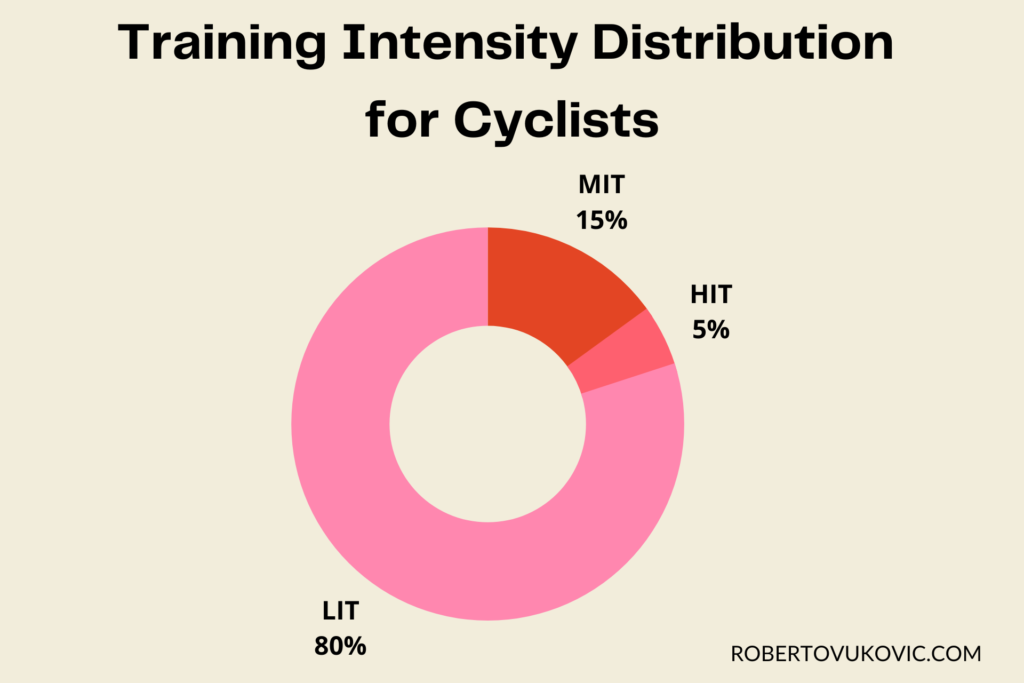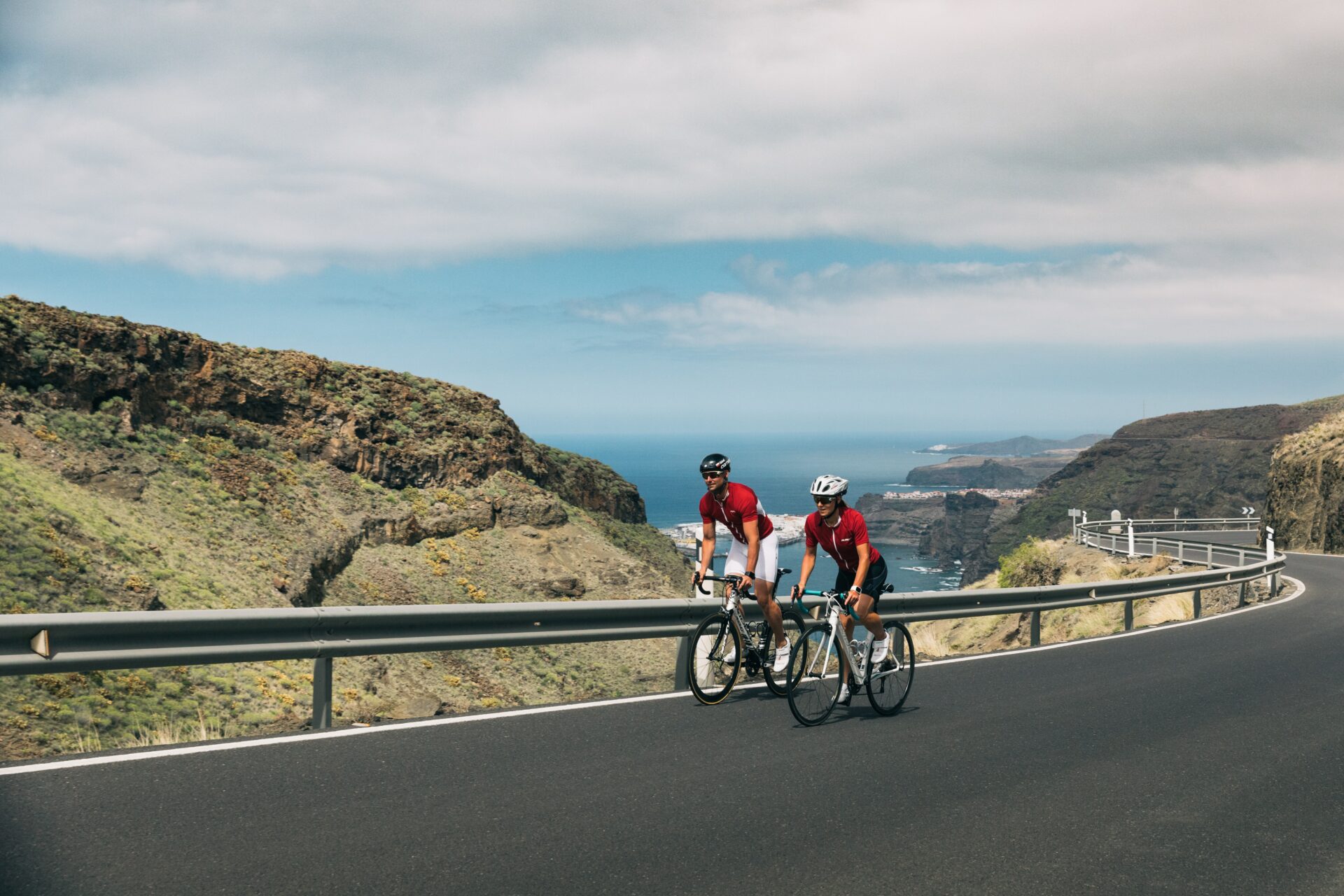Back in the 1990s, Jan Ullrich was on his way to becoming probably the best pro cyclist in German history. While doing lots of wrong things at the time, riders and coaches knew one thing for sure: Most of the training should be done at an easy endurance pace known as Zone 2 training (in a 6 Zone model).
Back then, coaches lacked science which led to crazy volumes and pretty savage training weeks. Former Ullrich coach Peter Baecker would leave Ullrich to ride 5 times a week for 200km straight, with the only fuel being mineral water.
Nowadays this is simply inconceivable.
Science made a lot of progress in cycling and the physiological and metabolical processes of endurance performance are much better understood today. But still, many cyclists underestimate the potential of proper Zone 2 training or lack understanding of how to do it right. Although lots of benefits were observed with low-intensity.
What is Zone 2 Training in Cycling?
Most cyclists talking about Zone 2 training refer to Zone 2 in a 6-Zone model. Zone 2 describes a low-intensity pace that is somewhat comfortable and can be held for a very long time.
It’s mostly prescribed at 55-75% of your functional threshold power (FTP). Your FTP is the highest power you can sustain for an hour. FTP is also used to derive your cycling training zones.
Due to the low intensity of Zone 2 training, it’s almost entirely powered by the aerobic energy system. This means most of the energy is contributed from fats and little is contributed from carbohydrates. Therefore, anaerobic glycolysis is low. However, don’t underestimate how many carbs you already burn at Zone 2, more on that later.
Science refers to Zone 2 training at an intensity below the “aerobic threshold,” the point at which blood lactate levels first time begin to rise. This is very individual but a solid landmark is 70% of your FTP for the end of Zone 2.
To reap the benefits of Zone 2 training we need to stay below that “aerobic threshold.” And possibly even lower.
The Benefits of Zone 2 Training
A systematic review of intensity distribution for endurance athletes stated that high intensity should always be built on a high volume of low-intensity training. Another review stated that benefits that were observed with low-intensity training were not observed with high-intensity training.
But what do these benefits look like?
1. Increased Mitochondrial Content
Mitochondria are the “power plants” within our muscle cells. They have to break down fats, carbohydrates, and lactate into usable energy (ATP) with the usage of oxygen. By accumulating training time in Zone 2 we stimulate our (aerobic) slow-twitch type 1 (ST) muscle fibers to build greater numbers of mitochondria.
The more mitochondria the higher the aerobic capacity. Hence, higher oxygen uptake and improved fuel utilization. This is the result of repeated muscle contraction. By contrast, high intensity achieves it through high-energy muscle contraction.
2. Increased Fat Oxidation
As already addressed with an increased number of mitochondria your body can utilize more fat which allows you to preserve your important glycogen stores for high-intensity efforts later in a race and to ride harder for longer.
3. Increased Capillarization
Zone 2 training enhances the buildup of more small blood vessels (capillaries) to deliver more oxygen to your working muscles.
4. Increased Lactate Clearance
Zone 2 training is said to be the best intensity for eliciting improvements in lactate clearance.
Slow-twitch fibers are the main contributors to lactate clearance. Lactate is a byproduct of glucose utilization that mainly occurs in your “anaerobic” fast-twitch fibers. FT fibers contain a transporter called MCT-4 that transports lactate away from these fibers. But lactate needs to be removed or it will accumulate.
Our slow-twitch fibers, in contrast, contain a transporter called MCT-1 that takes up lactate and transports it to the mitochondria where it can be rebuilt as energy for fuel. With lots of Zone 2 training, our type 1 fibers develop more of these important MCT-1 fibers. And with improved lactate clearance capacity we increase our FTP.
How Long Should You Train in Zone 2?
Just 1 hour of Zone 2 training can be important. On the one hand, you can use easy endurance miles for recovery from hard interval sessions and keep autonomic stress in balance. On the other hand, training your aerobic energy system at an easy pace is essential for long-term performance.
But looking at training effects it can be worth it to do at least one long endurance ride per week. Because muscle fatigue has a similar effect on muscle fiber recruitment as work intensity does.
By going long your glycogen stores become depleted, which further teaches your body to improve fat oxidation. Additionally, your slow-twitch fibers become fatigued, forcing your fast-twitch 2a fibers to do aerobic work. With training adaptation, these FT fibers become aerobically efficient and act more like slow-twitch fibers. That way, you further increase your aerobic base.
But we don’t wanna suffer the way Ullrich did. Don’t train on water. Eat carbs on your rides to provide yourself with improved performance and training adaptation.
How Often Should You Do Zone 2 Training per Week?
In the systematic review addressed earlier, it’s concluded that 2 or on occasion 3 interval sessions per week are sufficient for optimal performance. More interval sessions may result in overtraining or overreaching symptoms.
For that reason, if you’re able to ride your bike 5 times a week, 3 training sessions per week should be Zone 2 training. This accounts for cyclists riding 6 hours or up to 15 hours per week.
Here’s what a training intensity distribution could look like:

How Hard Should Low-Intensity Feel Like? The Team DSM Method
The general prescription for Zone 2 endurance training is around 55-75% of your FTP. However, when looking at the FTP of my athletes and my own, I find it to be possibly a little too high.
For example, my current FTP is 370 watts, which translates to 204-278 watts at Zone 2. However, if your FTP is as high as 400 watts, 200 watts might still be your preferred pace. Faster isn’t always better. So, I think we can better prescribe endurance rides at 50-60% of your FTP. On the one hand, it’s not too slow and on the other hand, it’s not too fast.
An article on autonomic stress states that autonomic stress accumulates once the “aerobic threshold” is passed. However, recent research indicates that prolonged exercise at low intensity (over 2hrs) may also disturb the autonomic balance, due to fatigue and a decreasing aerobic threshold.
By going slower we can perhaps prevent this effect. Because riding slower means less energy expenditure and fewer carbs burned. That transfers to a lower training load and probably lower fatigue.
And pro cycling Team DSM (formerly Sunweb) seems to follow this approach.
In a retrospective analysis done on Team Sunweb (today DSM), researchers noted that on average the male cyclists rode 91.9km or 182 minutes at 191 watts average power or 2.64 watts per kg. For the female riders, this was even lower at 138 watts on average or 2.30 watts per kg of body weight. And these are all world tour pros.
For example, I would need an average power of 177 watts at 67 kg to reach 2.64 w/kg. Not a lot, to be honest, and far from what I would derive from my FTP.
So, maybe we don’t need to crush it in Zone 2 either. Maybe we don’t need that constant tension on the pedals. Because as the adage goes: “More is not always better.” But of course, keep in mind that pro cyclists ride more than 30.000 km each year, and you might ride far less. Thus, you might be better off pushing harder and prioritizing to ride your endurance rides at 55% of your FTP. Because yes it’s even possible to ride your endurance rides too easily. Because if you don’t push hard enough, you don’t recruit enough muscle fibers to increase their aerobic capacity.
Zone 2 Training Examples
Do low-intensity training at a consistent pace. Sure, on climbs, you can ride up to 75% of your FTP.
An excellent example of a Zone 2 ride could be anything from 4-6 hours or shorter rides from 1-3 hours at 50-60% of your FTP.
It may sound boring, but the most effective and evidence-based workouts are the simplest. Zone 2 training remains the most significant part of any cycling training plan. For that reason, you should do Zone 2 training all season.
Ready to Step Up Your Cycling Training?
If you enjoyed this and want to improve your cycling performance, then get your hands on one of my plans, available on TrainingPeaks, and ride faster for longer, or click below to get my specific base, build, and peak plans for amateur and elite cyclists:
- RV The Block Periodization Plan, 4 Weeks (6-8 Hours)
- RV Improve Your FTP, 8 Weeks on 6 Hours, 10 Hours, or 15 Hours
- RV Gravel Advanced Base Plan 8-12 Hours (12 Weeks) – All Gravel Races
- RV Unbound 200 Three Phases Build Plan, Advanced 8-12 Hours (12 Weeks)
- RV Unbound 200 Three Phases Peak Plan Advanced 10 Hours (8 Weeks)
Follow me on Instagram for more Cycling Content.
- Get my favorite Power Meter *here.
- Get my favorite Shoes *here.
- Get the Vittoria Corsa Tyres I use *here.
Get the Newsletter
Receive pragmatic cycling advice, great stories, and training analyses from pro cyclists delivered to your inbox each week.
References
- Autonomic recovery after exercise in trained athletes: intensity and duration effects
- What is best practice for training intensity and duration distribution in endurance athletes?
- Training Fast Twitch Muscle Fibers: Why and How
- Training for intense exercise performance: high-intensity or high-volume training?
- TrainingPeaks: What is Lactate and Lactate Threshold
- Training Characteristics of Male and Female Professional Road Cyclists: A 4-Year Retrospective Analysis
- Effects of acute carbohydrate supplementation on endurance performance: a meta-analysis
Ad Hint for Asterisk Links
*Asterisks are affiliate links from services and gear I use and love. If you take action (i.e. make a purchase) I’ll earn some coffee money which I promise to drink while you enjoy the content and offers. You don’t pay a higher price.
